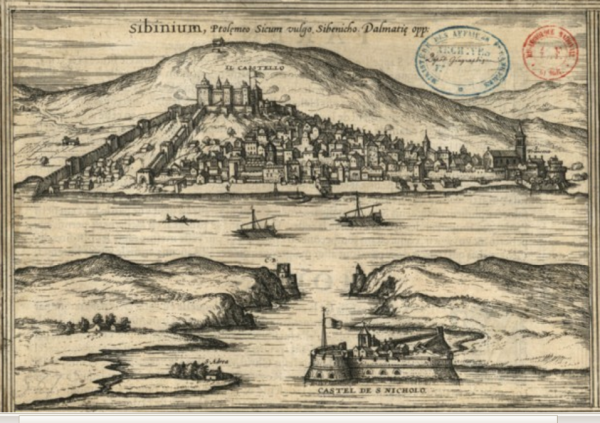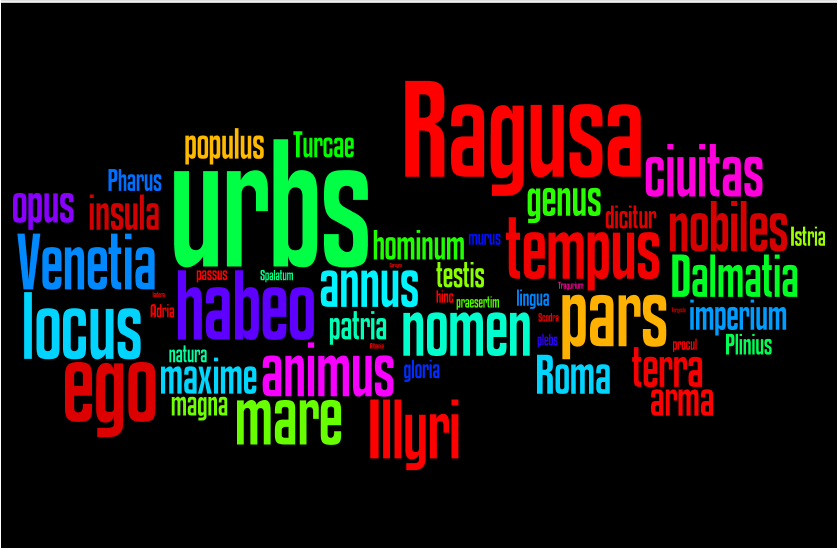Humanism on the Eastern Adriatic Coast
Thursday, 8 April 2010
11:00–12:30
Ateneo Veneto - Aula Tommaseo
Sponsor: Societas Internationalis Studiis Neolatinis Provehendis / International Association for Neo-Latin Studies
Organizer: Neven Jovanović, University of Zagreb
Chair: Jonathan Woolfson
Petronius in Dalmatia: The Codex Traguriensis (Paris. lat. 7989) and the Croatian Humanist Marko Marulić (1450-1524)
Bratislav Lučin, Književni Krug Split - Marulianum
Famous for the fact that it is the only manuscript that has preserved the Cena Trimalchionis from Petronius's Satyricon, the Codex Traguriensis (Paris. lat. 7989) has attracted the attention of scholars ever since it came to light in Trogir, Dalmatia (today Croatia) in the library of the Cippico family, in the middle of the seventeenth century. The fact that it disappeared without trace for more than two centuries after it was compiled by an unidentified scribe in Florence in 1423 has remained a mystery in itself. This paper shows that some light can be shed on the “dark age” of the Codex: one of its annotators was the Croatian humanist Marko Marulić (1450–1524), who entered notes and variants in it, especially in Catullus, and transcribed Claudian's Phoenix at its end. Marulić lived in Split (25 km south of Trogir) and was on friendly terms with members of the Cippico family.
A draft of the paper available here (PDF).
A First Look into the Corpus of Humanist "Laudationes Urbis" on the Eastern Adriatic Coast
Neven Jovanović, University of Zagreb
Latin praises of a city were widely popular during the Renaissance and important not only for their authors, but also for the place praised, whose self image the praise helps shape or confirm. Such praises were written by humanists for several Dalmatian cities (Kotor, Dubrovnik, Split, Trogir, Šibenik). Some are just obiter dicta, others are the central theme of a text. Authors were both visitors (Ciriaco d'Ancona, Michele Marullo Tarcaniota, Didacus Pyrrhus, Filippo Diversi, Palladio Fosco) and locals (Ivan Bolica, Marko Marulić, Frano Božićević Natalis, Ivan Lipavić, Vinko Priboević, Juraj Šižgorić). Their texts constitute now a digital corpus Laudationes urbium Dalmaticarum, included in a digital collection Croatiae auctores Latini (2009). In the sub-corpus of laudationes we research the following: What did the authors choose to say about these cities? How did they say it? How does it comply with motifs and forms of other humanist laudationes urbium / laudationes civitatum?
A recent draft of the paper available here (PDF). Slides available here (PDF).
Humanism in Schools: Italian Humanists as Teachers in Fifteenth-Century Ragusa and Dalmatian Communes
Sandra Ivović, University of Split
During the fifteenth century, a large number of Italian humanists came to Dalmatian cities, where they worked as notaries, chancellors, and teachers. Archival sources show that communal governments of Dalmatian cities (Dubrovnik, Split, Trogir, Zadar) tried to bring a good teacher in their city who would teach Latin grammar in public schools, but also some new subjects, thus slowly implementing new principles of studia humanitatis. Some of these teachers taught in several Dalmatian cities and some of them spent more than ten years of their teaching career there. In this paper, by focusing on four famous Italian humanist teachers in Dalmatia (Tideo Acciarini, Philippus de Diversis, Stephanus Fliscus, Palladius Fuscus), I will try to show what they were expected to teach and what their social life in Ragusa and Dalmatian communes was like.
A draft of the paper available here (PDF).
Representing the Accused: Nicholas of Modruš's (ca. 1427-80) History of the Gothic Wars as a Response to Leonardo Bruni?
Luka Špoljarić, Central European University
The paper will analyze De bellis Gothorum, a little-known historiographical work written by Nicholas, Bishop of Modruš (Nicolaus Modrusiensis), a Dalmatian humanist who spent most of his career in Rome. Addressing Nicholas's work one should first have in mind that Dalmatian Renaissance intellectuals relying on medieval traditions perceived the Goths as their ancestors. Moreover, my paper will argue that the work had a dialogical aspect to it as well; that it was written in response to Leonardo Bruni's De bello Italico aduersus Gothos, printed for the first time in 1470, only three years before Nicholas composed his work. The Florentine humanist highlighted the Gothic invasion as a cataclysm, the end of Italy's felicitous antiquity. The bishop of Modrus rather sought to exculpate the Goths up to a certain degree, and the paper will examine some of the rhetorical strategies he employed in doing so.
A draft of the paper available here (PDF).

